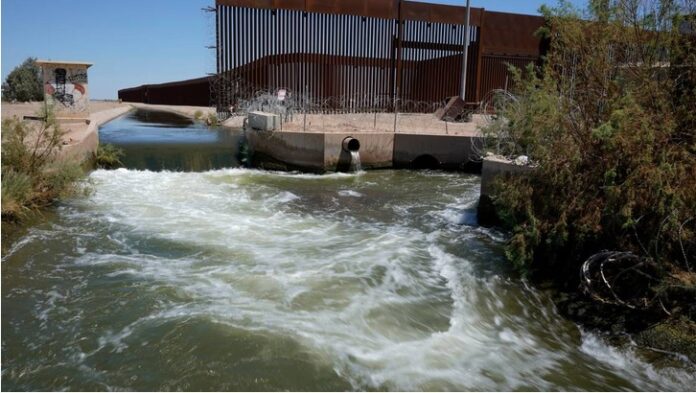
MEXICALI, BAJA CALIFORNIA.- When Gilbert Quintana, a farmer in the Mexicali Valley, learned he would soon lose 15% of his water supply, he did what he’s done before in a pinch: buy water from other growers in northern Mexico. But Quintana worries that such workarounds won’t always be possible. The water used to irrigate his 2,000 acres of (800 hectares) of Brussel sprouts, green onions, and lettuce comes from the over-tapped Colorado River, which a megadrought in the American West due in part to climate change is rapidly depleting. Buying water from other farmers is often the only way to grow the same acreage anymore, Quintana said, “but it’s short term.”
By the time the Colorado River reaches Mexico, just a fraction of its water is left for the fields of the Mexicali Valley and millions of people in northwestern desert cities. Now, that supply is more at risk than ever.
Water experts and scientists say Mexico, at the end of the river, will need to find other water for the two northwestern states that depend on it. They say the country will also have to use its supply more efficiently. But Mexico has been slow to act. “This hit us so fast that it took us a while to understand that it’s not a drought, it’s a new era. It’s a new regime,” said Carlos de la Parra, an urban and environmental studies professor at El Colegio de la Frontera Norte in Tijuana. The National Water Commission declared an emergency in four northern states in July. Roughly 65% of the country was facing drought. A swath stretching from Tijuana to Matamoros, more than 1,500 miles (2,414 kilometers), is still bone dry, with water shutoffs common in cities and towns and key reservoirs near all-time lows.
Tijuana, the sprawling border city of 2 million people, is especially dependent on the Colorado River. About 90% of its water comes from the river. Parts of the city have baked this summer as taps ran dry — sometimes due to mismanagement — with local water authorities blaming it on the drought. “It’s mismanagement linked with drought,” said Mario López Pérez, a consultant at the World Bank who previously worked for Mexico’s national water commission. To fill the gap, the government has sent water tankers, a common sight in Mexican cities, to neighborhoods without running water. People have also bought water from private sellers.
Source: Imparcial





